-
 Bitcoin
Bitcoin $115900
-2.12% -
 Ethereum
Ethereum $3714
-3.78% -
 XRP
XRP $3.020
-3.61% -
 Tether USDt
Tether USDt $1.000
0.01% -
 BNB
BNB $789.1
-0.87% -
 Solana
Solana $171.4
-4.82% -
 USDC
USDC $0.0000
-0.01% -
 Dogecoin
Dogecoin $0.2094
-5.79% -
 TRON
TRON $0.3269
-0.12% -
 Cardano
Cardano $0.7377
-4.88% -
 Hyperliquid
Hyperliquid $41.48
-2.39% -
 Sui
Sui $3.611
-5.28% -
 Stellar
Stellar $0.3990
-4.37% -
 Chainlink
Chainlink $16.95
-5.48% -
 Bitcoin Cash
Bitcoin Cash $563.3
-3.49% -
 Hedera
Hedera $0.2556
-2.55% -
 Avalanche
Avalanche $22.40
-4.82% -
 Ethena USDe
Ethena USDe $1.001
-0.02% -
 Toncoin
Toncoin $3.501
2.49% -
 UNUS SED LEO
UNUS SED LEO $8.947
-0.10% -
 Litecoin
Litecoin $106.7
-3.54% -
 Shiba Inu
Shiba Inu $0.00001243
-4.45% -
 Polkadot
Polkadot $3.707
-3.72% -
 Uniswap
Uniswap $9.408
-7.71% -
 Monero
Monero $306.8
-2.06% -
 Dai
Dai $0.0000
-0.01% -
 Bitget Token
Bitget Token $4.426
-2.70% -
 Cronos
Cronos $0.1424
-2.51% -
 Pepe
Pepe $0.00001077
-6.18% -
 Aave
Aave $261.1
-6.49%
What is the relationship between TRIX and the rate of change (ROC)?
TRIX applies ROC to a triple-smoothed EMA, filtering noise to capture sustained momentum, unlike standard ROC, which reacts quickly to raw price changes.
Jul 31, 2025 at 03:14 pm
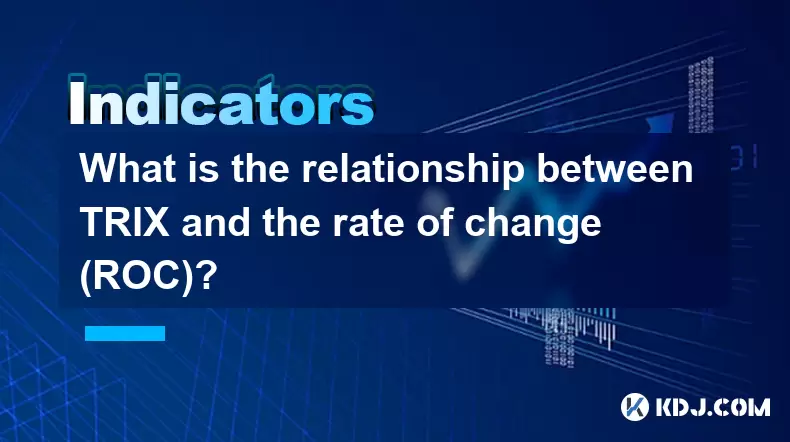
Understanding TRIX and Its Core Mechanism
TRIX, or the Triple Exponential Average, is a momentum oscillator used in technical analysis to identify oversold and overbought conditions, as well as potential trend reversals in cryptocurrency markets. It is derived from a triple-smoothed exponential moving average (EMA) of price data, which helps eliminate minor price fluctuations and noise. The calculation involves applying an EMA to the price, then applying a second EMA to the first, and finally a third EMA to the second. The resulting value is then used to calculate the rate of change (ROC) of this triple-smoothed line.
The formula for TRIX is typically expressed as:
- Compute a 14-period EMA of closing prices.
- Compute a second 14-period EMA of the first EMA.
- Compute a third 14-period EMA of the second EMA.
- Calculate the percentage rate of change of the third EMA from one period to the next.
This final step—measuring the rate of change—is what directly links TRIX to ROC. The output is a single line that oscillates around zero, where positive values indicate upward momentum and negative values indicate downward momentum.
Defining Rate of Change (ROC) in Cryptocurrency Analysis
The Rate of Change (ROC) is a straightforward momentum indicator that measures the percentage change in price between the current value and a value from a specified number of periods ago. In cryptocurrency trading, ROC is calculated using the formula:
- ROC = [(Current Price – Price n periods ago) / Price n periods ago] × 100
This indicator helps traders assess the speed at which prices are changing. A rising ROC suggests increasing bullish momentum, while a falling ROC may signal weakening momentum or bearish pressure. Because ROC is a pure measure of price velocity, it is highly sensitive to recent price movements and can generate rapid signals.
In the context of TRIX, the ROC is not applied directly to raw price data, but rather to the triple-smoothed EMA line. This distinction is crucial. While standard ROC reflects raw price momentum, TRIX’s version reflects momentum in a heavily filtered trend line, making it less noisy and more focused on sustained trends.
How TRIX Incorporates ROC in Its Calculation
The key relationship between TRIX and ROC lies in the final step of the TRIX computation. After the triple EMA smoothing process, the resulting value is a refined trend line that filters out short-term volatility. To transform this smoothed line into a momentum oscillator, analysts compute the percentage rate of change of this line over a single period (usually one bar or candle).
This means:
- Let EMA₃(t) represent the third EMA at time t.
- Then, TRIX(t) = [ (EMA₃(t) – EMA₃(t–1)) / EMA₃(t–1) ] × 100
The result is a momentum signal derived not from price itself, but from the momentum of a smoothed trend. This makes TRIX a second-order derivative of price—first smoothed via triple EMA, then differentiated via ROC. The use of ROC here allows TRIX to detect acceleration or deceleration in the underlying trend, which is especially useful in volatile crypto markets where price spikes can mislead simpler indicators.
Comparing TRIX and Standard ROC in Crypto Trading
While both TRIX and ROC are momentum oscillators, their behavior differs significantly due to their input data. A standard ROC applied to Bitcoin’s closing price over 14 periods will react sharply to sudden price jumps, such as those seen during exchange outages or whale movements. In contrast, TRIX will respond more slowly because it operates on a triple-smoothed line.
For example:
- If Bitcoin rises 10% in a single day, the 14-day ROC may spike sharply into positive territory.
- However, TRIX may show only a moderate increase, as the triple EMA dampens the impact of the single-day surge.
This makes TRIX more suitable for identifying sustained trend changes rather than short-term fluctuations. Traders using TRIX are less likely to be whipsawed by volatility, while those relying on ROC may receive earlier but potentially false signals. The trade-off is responsiveness versus reliability.
Both indicators can be used together: ROC for early momentum detection and TRIX for confirmation of trend strength.
Practical Application: Using TRIX and ROC on Trading Platforms
To apply TRIX and ROC on a cryptocurrency trading platform like TradingView or Binance:
- Open the chart for a crypto asset (e.g., Ethereum).
- Navigate to the "Indicators" menu.
- Search for "TRIX" and add it to the chart. Adjust the period (commonly 12 or 14).
- Separately, search for "Rate of Change" and add it. Set the same period for comparison.
- Observe how TRIX moves more slowly and generates fewer crossovers of the zero line.
- Watch for divergences: if price makes a new high but TRIX does not, it may signal weakening momentum.
For a manual setup:
- Download historical price data (e.g., CSV from Binance API).
- Use Python or Excel to compute three consecutive EMAs.
- Calculate the ROC of the third EMA using the percentage change formula.
- Plot the result alongside standard ROC for visual comparison.
Ensure the data frequency (e.g., 1-hour candles) matches your trading strategy. Backtest signals across multiple assets like Solana or Cardano to assess consistency.
Interpreting Crossovers and Divergences
A common signal in TRIX analysis is the zero-line crossover. When TRIX crosses above zero, it suggests the triple-smoothed trend is gaining upward momentum. A cross below zero indicates increasing downward momentum. Because TRIX is based on ROC of a smoothed line, these crossovers are less frequent but often more reliable than those in standard ROC.
Divergences are equally important:
- If Bitcoin reaches a new high but TRIX fails to surpass its prior peak, this bearish divergence may precede a reversal.
- Conversely, if price hits a new low but TRIX forms a higher low, it suggests bullish divergence and potential upward correction.
Standard ROC can show similar divergences, but they occur more frequently and require careful filtering. TRIX’s smoothing reduces false divergence signals, making it a preferred tool for swing traders in crypto markets.
FAQs
What is the main difference between TRIX and ROC?
The primary difference is that TRIX applies ROC to a triple-exponentially smoothed price line, while standard ROC applies directly to raw price data. This makes TRIX smoother and less reactive to short-term volatility.
Can TRIX be used alone for trading decisions?
While TRIX provides reliable trend momentum signals, it should be combined with other tools like volume analysis or support/resistance levels. Relying solely on TRIX may cause missed entries due to its lagging nature.
Why does TRIX use triple smoothing instead of single or double?
Triple smoothing further reduces noise and short-term fluctuations, allowing TRIX to focus on major trend movements. Single or double smoothing retains more volatility, which defeats the purpose of filtering out market noise.
Is TRIX effective in sideways cryptocurrency markets?
TRIX tends to produce choppy signals in ranging markets due to frequent zero-line crossovers. It performs best in trending environments, where sustained momentum allows clear signal interpretation.
Disclaimer:info@kdj.com
The information provided is not trading advice. kdj.com does not assume any responsibility for any investments made based on the information provided in this article. Cryptocurrencies are highly volatile and it is highly recommended that you invest with caution after thorough research!
If you believe that the content used on this website infringes your copyright, please contact us immediately (info@kdj.com) and we will delete it promptly.
- Ripple, XRP, and RLUSD: Navigating Growth and Innovation
- 2025-08-01 08:30:37
- Tether's Triumph: Profits, US Initiatives, and Stablecoin Supremacy
- 2025-08-01 09:11:00
- Ethereum, ZK-VMs, and Quantum Resistance: A New Era for Blockchain Security?
- 2025-08-01 09:30:12
- Ethereum: Institutional Interest Surges Amid Network Upgrades
- 2025-08-01 08:50:19
- JPMorgan, Ripple, and Blockchain Payments: A New York Minute on Institutional Adoption
- 2025-08-01 08:30:37
- Coinbase Goes All-In: Tokenized Stocks, Prediction Markets, and the Future of Finance
- 2025-08-01 08:50:19
Related knowledge
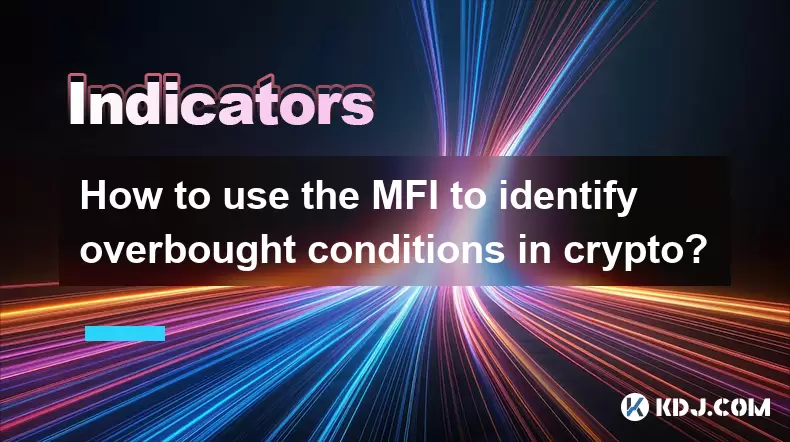
How to use the MFI to identify overbought conditions in crypto?
Aug 01,2025 at 10:49am
Understanding the Money Flow Index (MFI) in Cryptocurrency TradingThe Money Flow Index (MFI) is a momentum oscillator that measures the inflow and out...
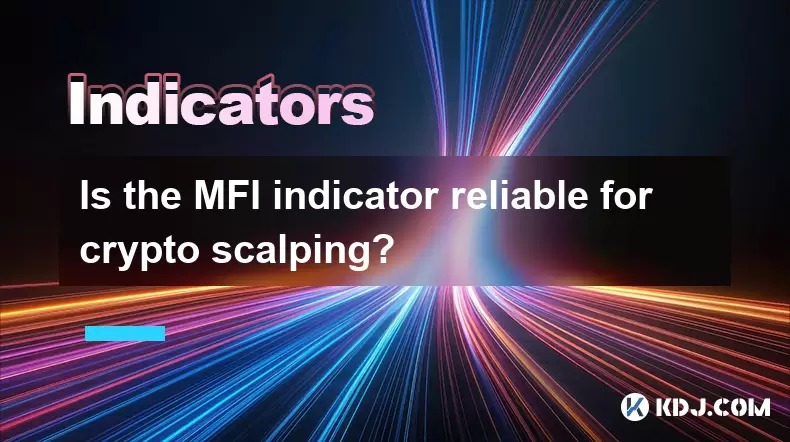
Is the MFI indicator reliable for crypto scalping?
Aug 01,2025 at 11:00am
Understanding the MFI Indicator in Cryptocurrency TradingThe Money Flow Index (MFI) is a momentum oscillator that measures the flow of money into and ...

What are the best MFI indicator strategies for altcoins?
Aug 01,2025 at 08:01am
Understanding the MFI Indicator in Altcoin TradingThe Money Flow Index (MFI) is a momentum oscillator that measures the flow of money into or out of a...
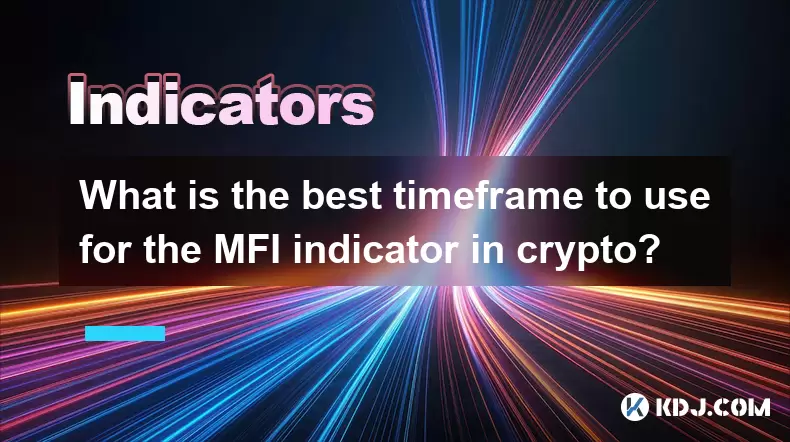
What is the best timeframe to use for the MFI indicator in crypto?
Aug 01,2025 at 09:02am
Understanding the MFI Indicator in Cryptocurrency TradingThe Money Flow Index (MFI) is a momentum oscillator that measures the flow of money into and ...
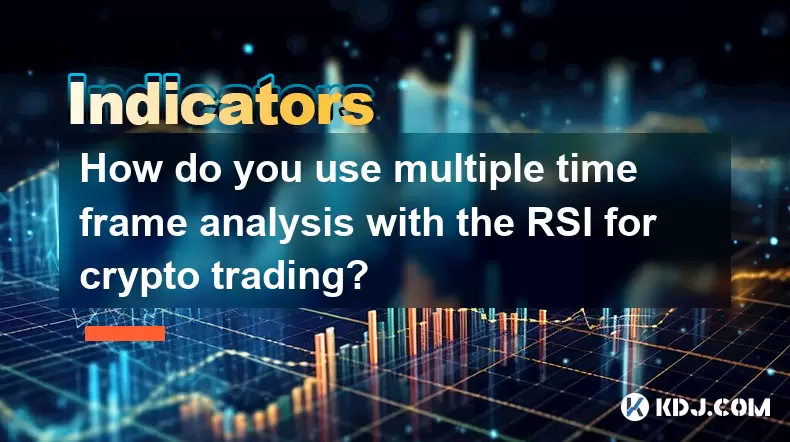
How do you use multiple time frame analysis with the RSI for crypto trading?
Aug 01,2025 at 05:19am
Understanding the Role of RSI in Crypto TradingThe Relative Strength Index (RSI) is a momentum oscillator that measures the speed and change of price ...
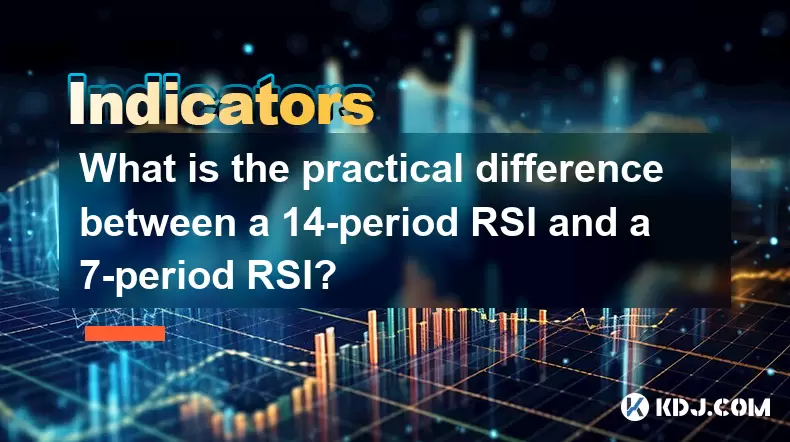
What is the practical difference between a 14-period RSI and a 7-period RSI?
Aug 01,2025 at 07:01am
Understanding the Relative Strength Index (RSI)The Relative Strength Index (RSI) is a momentum oscillator widely used in cryptocurrency trading to mea...

How to use the MFI to identify overbought conditions in crypto?
Aug 01,2025 at 10:49am
Understanding the Money Flow Index (MFI) in Cryptocurrency TradingThe Money Flow Index (MFI) is a momentum oscillator that measures the inflow and out...

Is the MFI indicator reliable for crypto scalping?
Aug 01,2025 at 11:00am
Understanding the MFI Indicator in Cryptocurrency TradingThe Money Flow Index (MFI) is a momentum oscillator that measures the flow of money into and ...

What are the best MFI indicator strategies for altcoins?
Aug 01,2025 at 08:01am
Understanding the MFI Indicator in Altcoin TradingThe Money Flow Index (MFI) is a momentum oscillator that measures the flow of money into or out of a...

What is the best timeframe to use for the MFI indicator in crypto?
Aug 01,2025 at 09:02am
Understanding the MFI Indicator in Cryptocurrency TradingThe Money Flow Index (MFI) is a momentum oscillator that measures the flow of money into and ...

How do you use multiple time frame analysis with the RSI for crypto trading?
Aug 01,2025 at 05:19am
Understanding the Role of RSI in Crypto TradingThe Relative Strength Index (RSI) is a momentum oscillator that measures the speed and change of price ...

What is the practical difference between a 14-period RSI and a 7-period RSI?
Aug 01,2025 at 07:01am
Understanding the Relative Strength Index (RSI)The Relative Strength Index (RSI) is a momentum oscillator widely used in cryptocurrency trading to mea...
See all articles

























































































